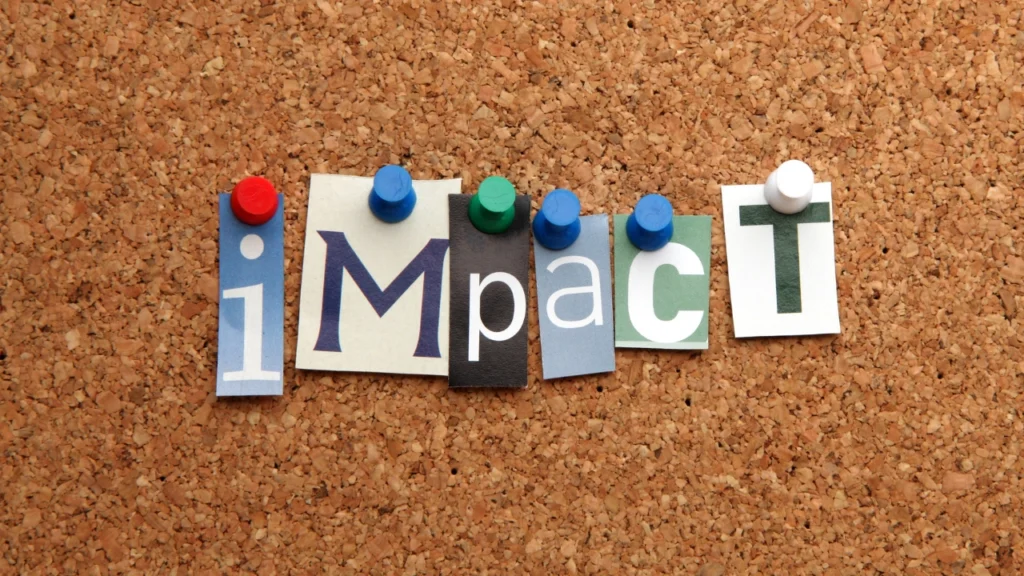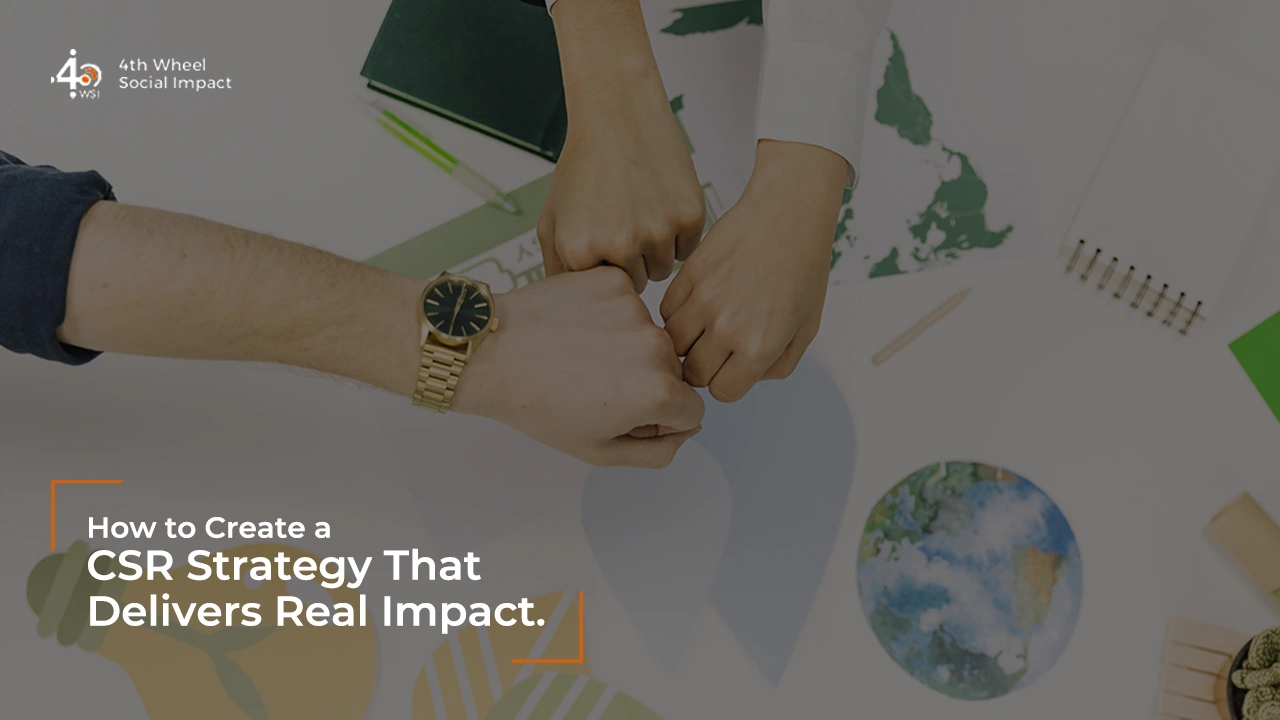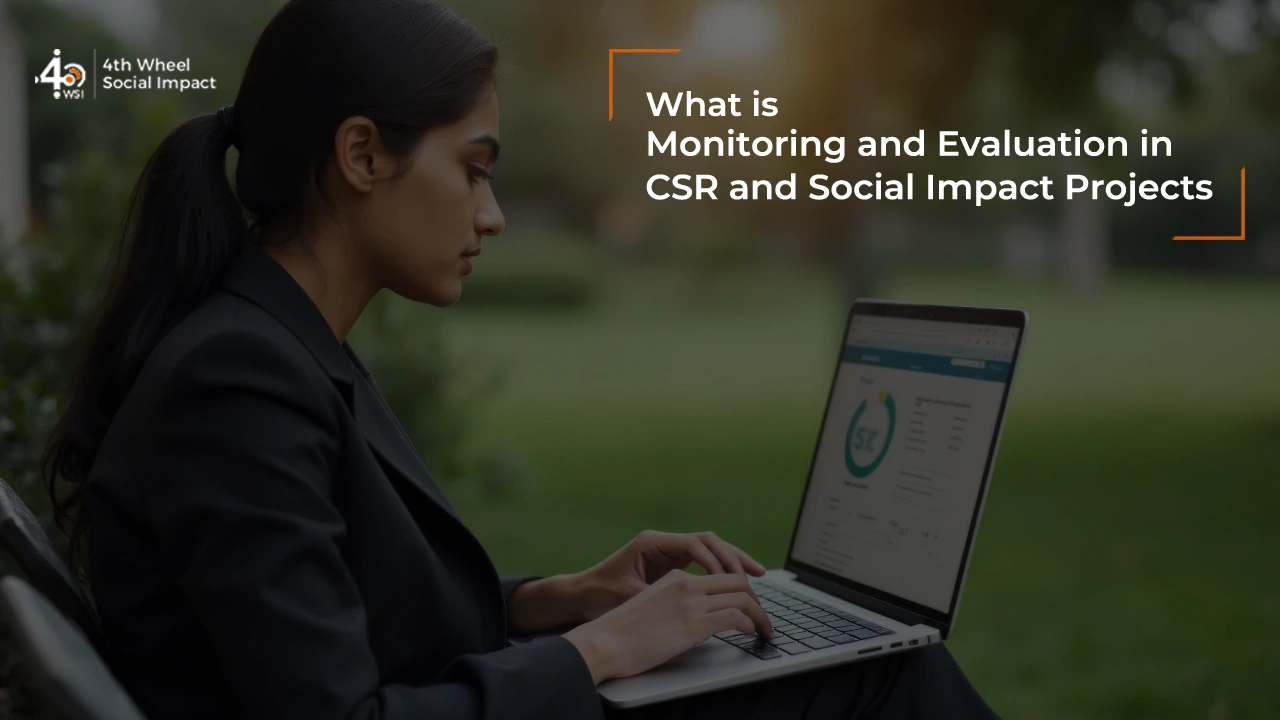Conducting a social impact assessment is essential for any organisation that wants to understand and improve its effect on people and communities. In 2025, with growing demands for transparency and accountability, impact can no longer be an assumption. It must be shown clearly and honestly.
At 4th Wheel, we support companies, foundations, and NGOs in planning and delivering rigorous social impact assessments. Our role as trusted social impact assessment consultants is to ensure that clients get insights they can use, not just reports they can file.
This guide outlines the process, tools, and considerations for conducting a strong social impact evaluation in today’s fast-evolving landscape.
Key Advantages of Conducting a Social Impact Assessment
A well-executed social impact assessment process gives organisations valuable insights and strengthens program outcomes. Here are the key advantages:
- Informed decision-making: A strong social impact analysis provides data on what works and what does not. It helps organisations allocate resources more effectively and refine program design & strategy based on evidence, not assumptions.
- Stronger accountability: A well-documented social impact assessment report provides transparency for funders, boards, and community members. It demonstrates what was achieved and where improvements are needed, helping to build trust.
- Program improvement: Ongoing social impact evaluation helps organisations identify strengths and gaps in program delivery. Insights from the field guide adjustments that lead to deeper and more lasting impact.
- Risk reduction: A robust SIA assessment can highlight potential negative impacts early. Addressing risks before they escalate protects both community well-being and the organisation’s credibility.
- Improved funding potential: Funders seek proof of impact. A clear, credible social impact assessment can strengthen grant applications, attract new partners, and open opportunities for expanded support.

Step-by-Step Process for Conducting a Social Impact Assessment
An effective social impact assessment process is built on clear steps. Each step helps make sure that the findings are accurate, useful, and grounded in real-world experience. Here is how organisations can approach conducting a social impact assessment in 2025:
1. Define Scope and Objectives
Before collecting any data, the first step is to clearly define what the assessment will address. This involves identifying the programs or activities to be assessed, the geographic focus, and the specific outcomes to measure. A well-defined scope helps keep the project organised and achievable. Objectives must be realistic and linked to both organisational goals and community priorities. Social impact assessment consultants, like those at 4th Wheel, can help organisations shape these objectives to ensure they are measurable and relevant.
2. Identify Stakeholders
A successful social impact assessment includes the voices of those affected by the program. Early in the process, organisations should map out key stakeholders. These include community members, local leaders, partners, funders, and internal staff. Engaging stakeholders helps clarify expectations and ensures that the assessment captures diverse perspectives. It also builds trust, making it easier to collect honest, accurate feedback later in the process.
3. Develop an Impact Framework
An impact framework defines what success looks like and how it will be measured. This is often the most technical part of the social impact assessment process. The framework should include:
Key outcomes to be measured
Indicators for each outcome
Data collection methods
Timelines for data collection and analysis
By aligning this framework with both community needs and organisational goals, the assessment stays relevant. Social impact evaluation methods chosen should match the type of outcomes being assessed—for example, quantitative methods for health data, or qualitative methods for changes in social attitudes.
4. Select Tools and Design Data Collection
Next, choose appropriate tools for social impact assessment. This could involve using surveys, interviews, focus group discussions, or observation checklists. Each tool must be designed carefully to capture reliable data. Questionnaires should be clear and culturally appropriate. Sampling methods must be fair and transparent. Data privacy must be protected throughout the process. A well-designed social impact assessment tool can save time and reduce errors during collection.
5. Collect and Verify Data
Data collection is a critical step that requires attention to quality and consistency. Field staff or trained enumerators gather information from stakeholders and program sites. Verification checks should be built in to maintain data accuracy. This may include spot checks, supervisor reviews, and triangulation with existing records. High-quality data is the foundation of meaningful social impact analysis and will directly affect the credibility of the final findings.
6. Analyse Data and Interpret Results
After data is collected, it should be analyzed in a structured and systematic way. For quantitative data, statistical tools can be used to identify trends, outcomes, and correlations. For qualitative data, thematic analysis helps identify patterns and key insights. The goal of this step is to move beyond raw data and provide clear, actionable insights about program performance. This is where measuring social impact turns from theory into practical understanding.
7. Prepare the Social Impact Assessment Report
The findings should be compiled into a clear social impact assessment report. This report must balance technical detail with readability. It should explain methods used, results found, and recommendations for action. Visuals such as charts, maps, and stories from the field can help bring the data to life. A good report supports both internal learning and external accountability.
8. Share Findings and Drive Action
Finally, the insights from the social impact assessment should be shared with key stakeholders. This step is about more than compliance; it is about learning and improvement. Conduct review sessions with program teams, partners, and community members. Apply the insights gained to guide program adjustments, plan future activities, and support fundraising efforts. Regular, transparent sharing builds trust and helps turn the social impact evaluation into real-world change.
You may also read: Importance of Social Impact Assessment for Real Change
Tools & Technologies for Social Impact Assessment in 2025
In 2025, organisations have access to a wide range of tools for social impact assessment that make data collection, analysis, and reporting faster and more reliable. Choosing the right social impact assessment tool depends on your program type, scale, and learning goals.
Digital Data Collection Platforms
Mobile-based tools like KoboToolbox, SurveyCTO, and Open Data Kit (ODK) allow teams to collect data in the field with smartphones or tablets. These platforms help reduce errors, track real-time progress, and improve data accuracy. Digital tools are especially useful when conducting a social impact assessment in remote or large-scale programs.
Data Visualisation Tools
Once data is collected, visualisation tools such as Google’s Looker Studio, Tableau and Power BI help turn numbers into insights. These platforms enable clear, interactive dashboards that help both technical and non-technical audiences understand results. Strong visuals improve social impact analysis and make reports more engaging.
Geospatial Mapping
Geospatial tools, including GIS mapping, help organisations visualise where their programs are working and identify underserved areas. This can reveal patterns in program reach and outcomes, supporting more targeted and equitable interventions.
Qualitative Analysis Software
For projects that rely heavily on interviews, focus groups, or open-ended feedback, qualitative analysis tools like Dedoose, NVivo, or ATLAS.ti are essential. They help teams manage large volumes of qualitative data and extract key themes and patterns. This supports richer social impact evaluation.
AI-Based Tools
Emerging AI tools can automate parts of social impact evaluation methods, such as analysing sentiment in stakeholder feedback or detecting patterns in large datasets. While not a replacement for human insight, AI can speed up analysis and free up resources for deeper program reflection.

Legal and Ethical Considerations in Social Impact Assessment
A well-planned social impact assessment process must protect the rights of all participants and respect local laws and ethical standards.
1. Informed Consent
Participants in a social impact evaluation must give informed consent before sharing data. This means they should know why the data is being collected, how it will be used, and who will have access. Consent should be documented clearly.
2. Data Privacy and Security
Protecting personal data is critical. Organisations must follow national privacy laws and global best practices when handling data. Personal identifiers should be anonymised where possible. Secure storage and limited access help prevent misuse of sensitive information.
3. Respect and Fairness
Conducting a social impact assessment must respect local cultures and power dynamics. Questions should be worded sensitively. Data collection should not disrupt communities. Field teams must be trained to interact with participants ethically and with empathy.
4. Transparency and Accountability
Organisations should be open about the purpose and results of social impact assessments. Findings should be shared with communities in ways they can understand. This builds trust and accountability, reinforcing the legitimacy of the social impact assessment report.
5. Compliance with Legal Frameworks
Different sectors and regions may have specific legal requirements for social impact assessments. It is important to review relevant national guidelines and industry standards before starting the steps in social impact assessment. Experienced social impact assessment consultants can guide organisations through this process to verify full compliance.
Reporting & Communicating Social Impact
A strong social impact assessment report is not just a record of findings. It is a tool for learning, accountability, and relationship building. How you report and communicate impact matters as much as what you measure.
Structure the Report Clearly
A well-organised social impact assessment report should include:
- Executive summary
- Background and objectives
- Social impact assessment process and methods used
- Key findings and data
- Case studies or stakeholder voices
- Recommendations for action
Keeping the structure simple and clear makes it easier for readers to understand and use the insights.
Balance Data with Human Stories
Data builds credibility. Stories build connections. Combining quantitative results with first-hand accounts from community members brings the social impact analysis to life. This helps stakeholders see both the scale and depth of the program’s outcomes. By including voices from those directly impacted, you make the data relatable and tangible. When stories align with hard data, they create a powerful narrative that shows the true social return on investment, adding credibility to the social impact assessment report.
Tailor Communication for Different Audiences
Not every stakeholder needs the same level of detail. Board members may want high-level results. Program managers may need detailed findings. Community members may prefer plain-language summaries or visual materials. Using a flexible communication approach helps in making sure that insights from the social impact evaluation are understood and used by all key audiences.

Share Findings Transparently
Transparency builds trust. Organisations should share social impact assessments openly with communities, partners, and funders. A transparent approach helps demonstrate accountability and commitment to continuous improvement. Being open about challenges and lessons learned in the social impact assessment process can foster stronger relationships with stakeholders and improve future program outcomes.
Drive Action Based on Findings
Reporting is not the end of the process. The goal of conducting a social impact assessment is to learn and improve. Use findings to refine programs through M&E, inform new initiatives, and strengthen future social impact evaluation methods. Keeping reporting linked to action sees to it that the process leads to real, measurable change.
Read Next
- PGSS: Strengthening Systems for Social Impact | Our Work
- What is included in an impact evaluation study? – The4thWheel
Conclusion
An effective social impact assessment helps organisations move beyond assumptions. It turns programs into results and results into insights that can drive lasting change. But this process requires more than tools. It requires careful planning, ethical practice, and a genuine commitment to learning.
At 4th Wheel, we support organisations across sectors in conducting social impact assessments that are both rigorous and practical. As experienced social impact assessment consultants, we help clients design meaningful evaluations, use the right methods, and communicate findings clearly.
Partner with 4th Wheel to turn your impact goals into real-world outcomes that communities can see and trust.
FAQs
What is the difference between EIA and SIA?
An Environmental Impact Assessment (EIA) focuses on how a project affects the environment—air, water, land, and ecosystems. A Social Impact Assessment (SIA) examines how projects or programs affect people and communities. Both are important, but social impact assessments look at social well-being, equity, livelihoods, and cultural impacts.
What should an impact assessment include?
A good social impact assessment report includes clear objectives, a description of the social impact assessment process, stakeholder input, data on both positive and negative impacts, and actionable recommendations. It should also outline the methods used and show how findings will inform future actions.
How do you measure your social impact?
Measuring social impact requires using both qualitative and quantitative data. It involves setting clear outcomes, selecting appropriate social impact evaluation methods, collecting data from stakeholders, and analysing this data to understand changes caused by the program. Reliable social impact analysis provides both numbers and stories to show real-world outcomes.
What are the approaches to social impact assessment?
Approaches to social impact assessments vary depending on goals. Common methods include theory-based evaluation, participatory approaches, and mixed-method designs. Combining qualitative insights with quantitative data helps build a full picture of impact. Working with social impact assessment consultants can help organisations choose the right approach for their needs.
What tools are used to measure social impact effectively?
Effective tools for social impact assessment include digital data collection platforms, GIS mapping, dashboards for visual analysis, and qualitative analysis software. The choice of social impact assessment tool depends on the type of data needed. Combining different tools helps provide a well-rounded, reliable view of program results.




